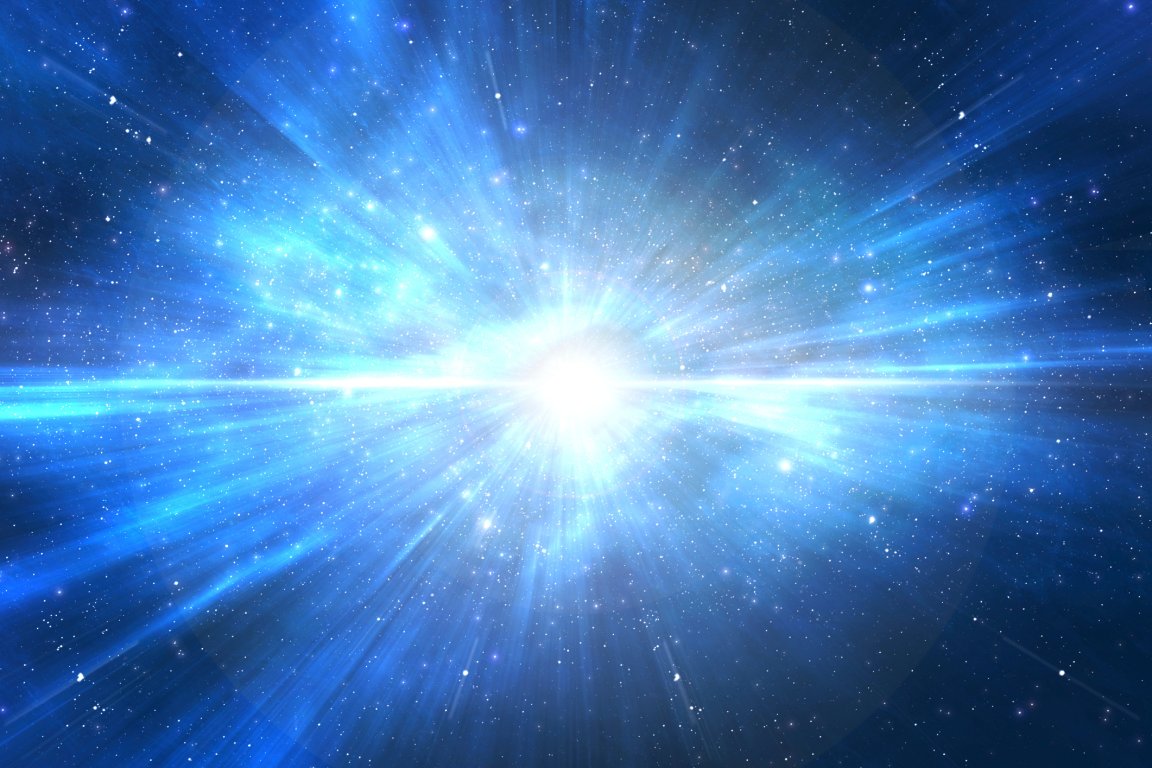
Seeking the Beginning of Things
The problem with understanding the Big Bang—and what may have come before it, and what happened immediately after—is that the very nature of that unfathomable event has destroyed most of the evidence of its ever occurring at all.
The subsequent evolution of the universe, of course, hasn’t helped much either.
While it’s unlikely that all of the mysteries surrounding the birth of our universe will ever be fully explained, the search continues anyway, and cosmic archaeology has managed to unearth some of the secrets from the remotest epochs of cosmic history.
The cosmic microwave background (CMB), the dissipating afterglow of the Big Bang that still simmers in the fabric of spacetime, has been especially helpful to cosmologists. It preserves minute variations in its signal—quantum fluctuations from the time of the Big Bang that were “baked” into the CMB—which have since been exaggerated by cosmic expansion, and so act like a trove of fossils from the birth of the universe.
If these fossils could be assembled correctly, a number of fundamental questions might be answered: is the theory of cosmic inflation correct? Did the universe expand by many orders of magnitude in the first fractions of a second after the Big Bang? Or was there instead some kind of “Big Crunch,” in which an unknown, anterior universe collapsed to form our own?
So far the answers have eluded us, largely because we’ve lacked an important key to reconstructing these cosmic fossils: understanding their configuration in time.
“Imagine you took the frames of a movie and stacked them all randomly on top of each other. If those frames aren’t labeled with a time, you can’t put them in order. Did the primordial universe crunch or bang? If you don’t know whether the movie is running forward or in reverse, you can’t tell the difference,” says Xingang Chen of the Harvard-Smithsonian Center for Astrophysics and the University of Texas at Dallas.
He is also lead author of a new paper to be published in the Journal of Cosmology and Astroparticle Physics that proposes a possible way to finally time stamp those movie frames.
“Primordial Standard Clocks”
Chen and the gang think these cosmic time stamps will take the form of something called “primordial standard clocks.” These are heavy, subatomic particles (strictly hypothetical, it should be understood) that are expected to result from the Holy Grail of theoretical physics—the “theory of everything,” which will unite the world of the very small (quantum mechanics) with the world of the very large (general relativity).
Theoretically, these primordial standard clocks should oscillate in a consistent and universal fashion, and so behave like precise, cosmic timepieces. The oscillations, or “ticks,” of these clocks would be measurable in the CMB, but current instrumentation doesn’t possess a fine enough resolution to distinguish them.
So, actual discovery of the primordial standard clocks must be deferred to a later date. Experiments searching for the echoes of gravitational waves in the CMB will compile precise enough data; with any luck, the first primordial standard clocks will be discovered in the next decade.
In the meantime, physicists await developments, and the mysteries of the origins of our universe remain just that.